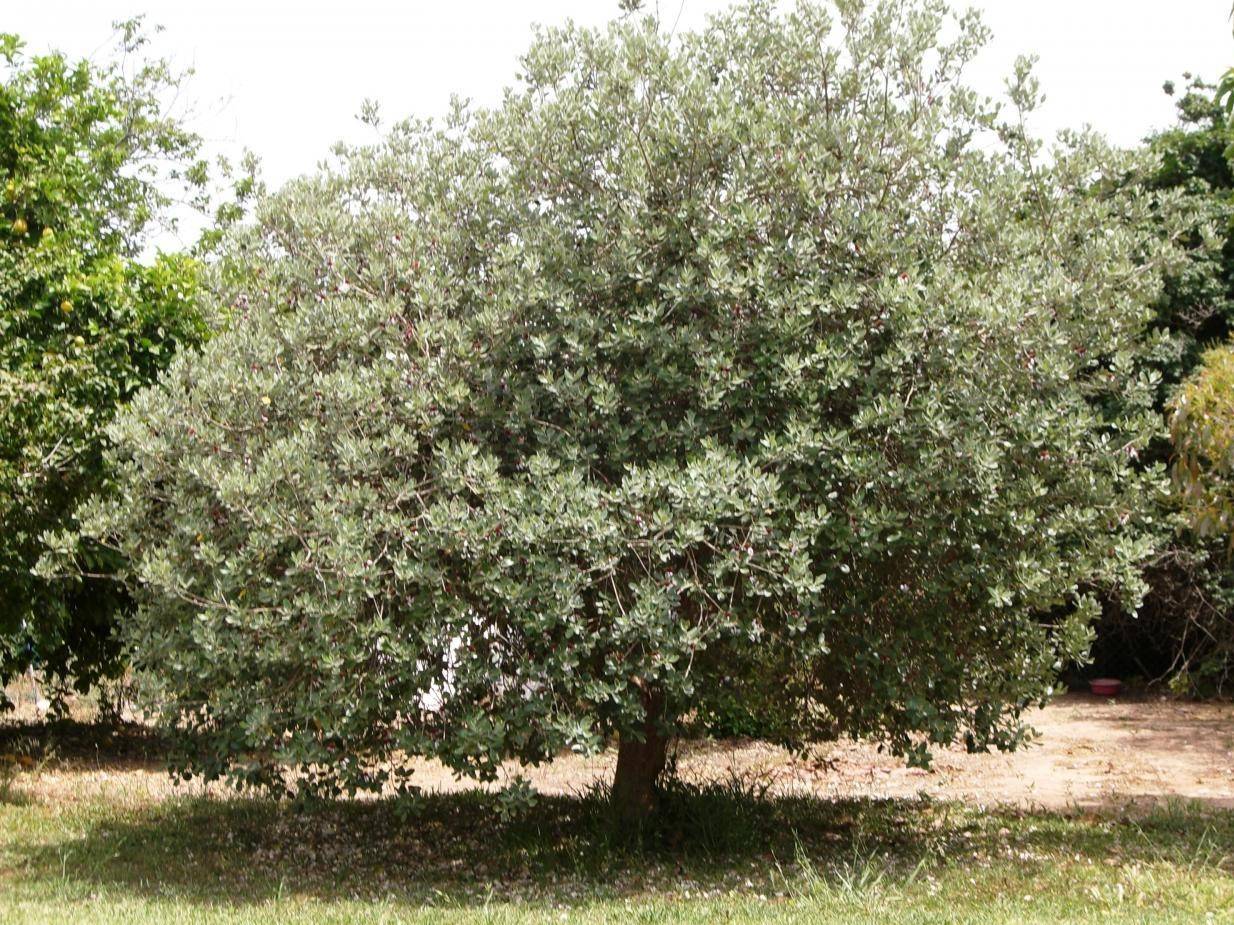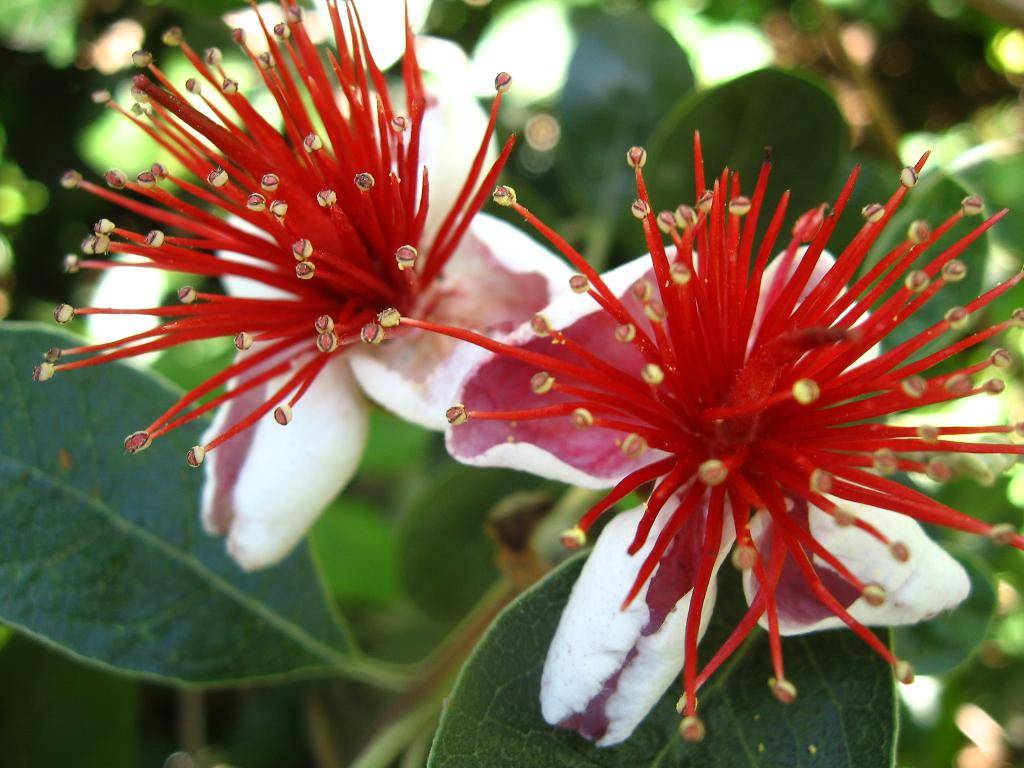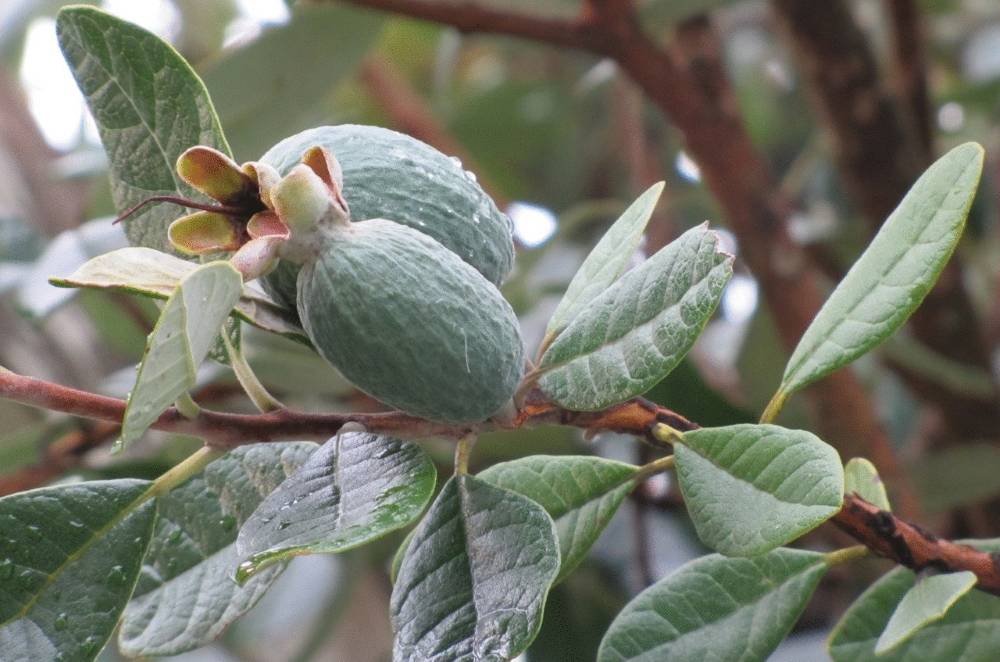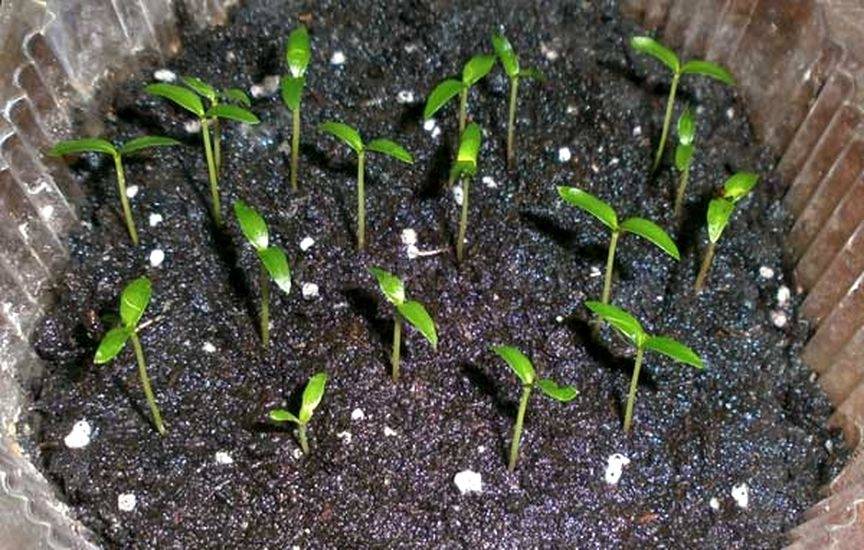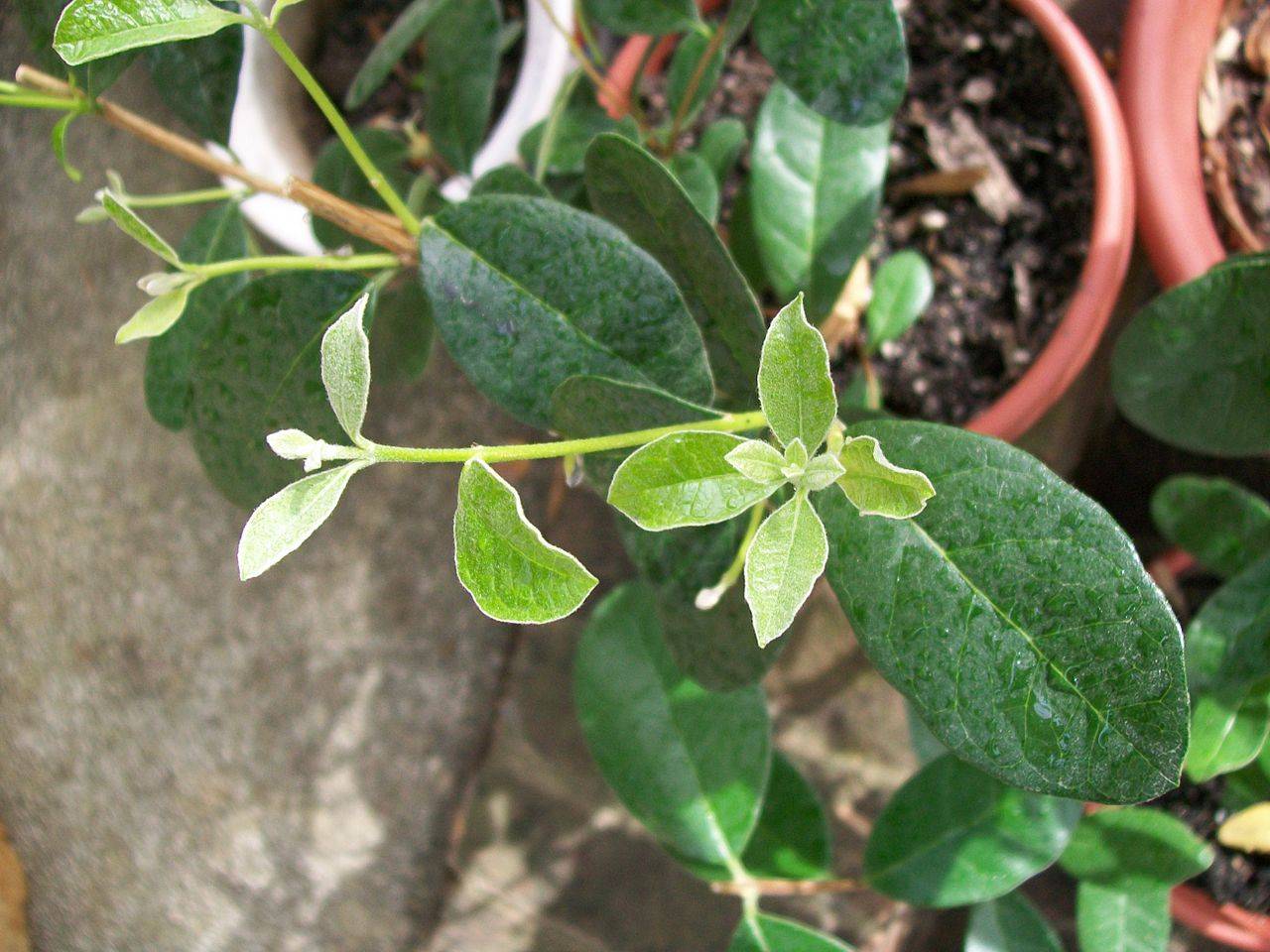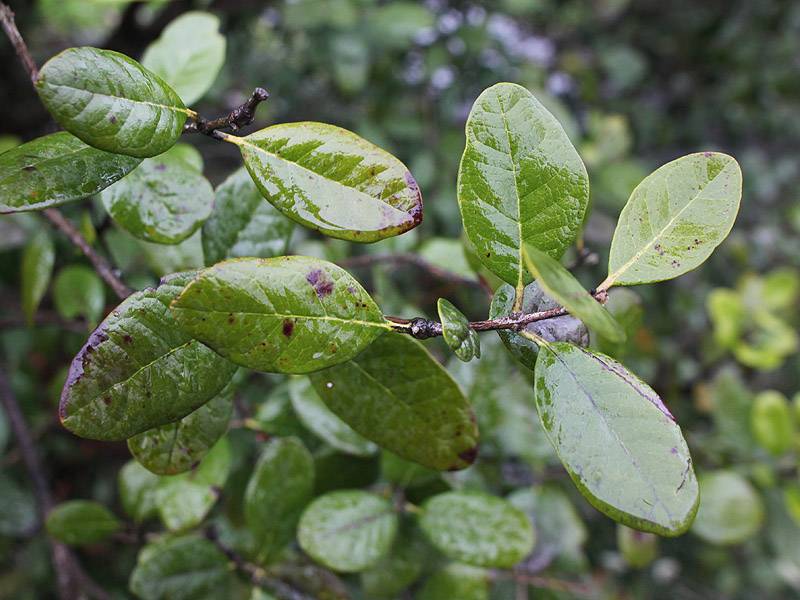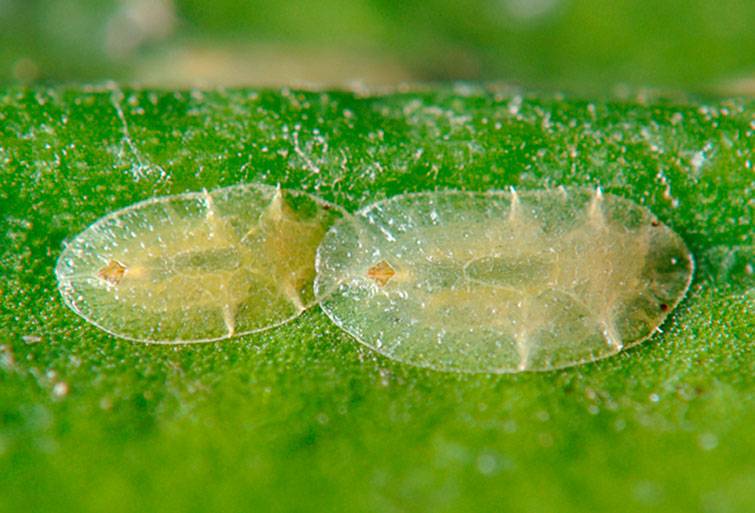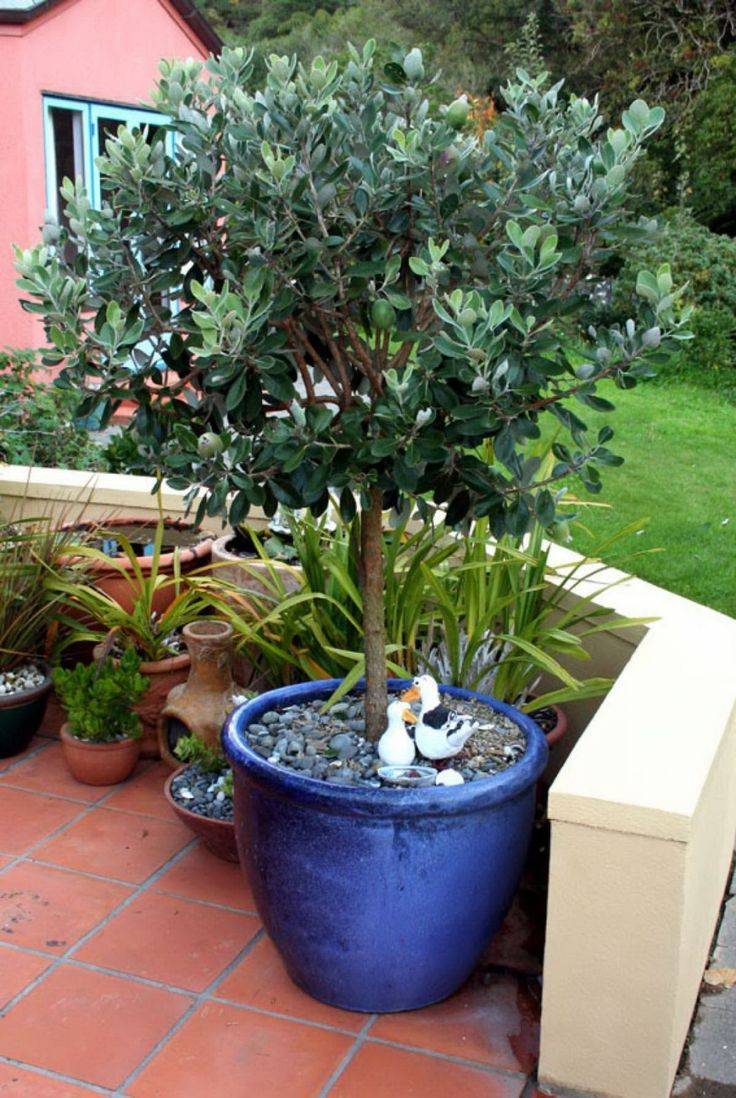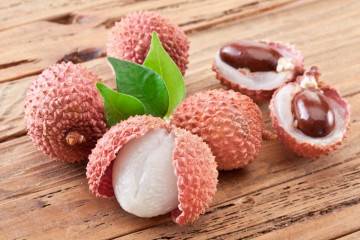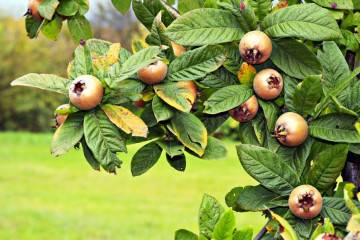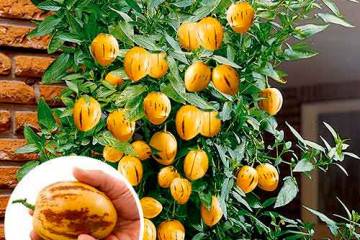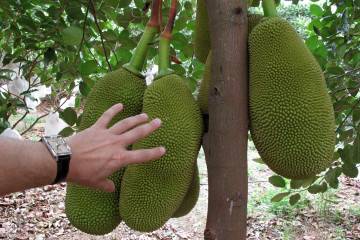Feijoa is a fruit or a berry - where it grows and what it looks like
Content:
Delicious green fruits, similar at the same time to unripe walnuts or huge gooseberries, appear on store shelves in the fall and attract connoisseurs of their unusual tart sweet taste. Feijoa fruit is very beneficial for health. The plant is grown in the south in gardens, but sometimes in greenhouses, and even indoors.
What is feijoa: is it a fruit or berry, where it grows and what it looks like
The fruiting evergreen feijoa takes the form of a shrub or not very tall tree. Prized for its fertility.
Feijoa - what is it
The feijoa genus has another name - Akka Sellova (lat. .cca sellowiana). The plant is usually attributed to the Myrtaceae family (lat.Myrtaceae). It was opened by the scientist J. da S. Feijo, after whom the name was given to sweet fruits.
An evergreen shrub or tree does not grow taller than 4 m.
Feijoa: where it grows in nature
The homeland of culture is the subtropics and tropics of South America. Today, the distribution area of the plant covers all corners of the planet with fertile soil and a warm climate without negative winter temperatures, including the south of Russia.
Between tropical and subtropical climates, feijoa prefers subtropics (for example, the south of the Russian Federation), which explains the presence of huge plantations along the entire coast of the Mediterranean Sea, in Dagestan, in the south of Krasnodar Territory, in Georgia, Crimea, in the Caucasus, in Turkmenistan and in the Caucasus. There, the plant is grown in the same volumes as the figs with which they are adjacent.
What does a feijoa tree look like?
The crown of the plant is spreading, often twice the height in width. The root system is superficial and highly branched, but at the same time rather compact. The culture is hygrophilous. The trunks are covered with bark with a rough greenish-brown surface.
Leaves are simple elliptical or oval in shape, grow on the shoots on short petioles opposite opposite. The leaf surface is hard, leathery with feathery venation. The lower surface is lighter - greenish-gray with slight pubescence, and the upper is smooth, dark green in color.
How feijoa blooms
Buds grow from the axils of the leaves. They can be single, paired, or collected in small corymbose inflorescences. All flowers are bisexual, attract attention with long, numerous (up to 80 pcs. In a corolla) stamens. The color of the petals is white-pink. They need cross-pollination, as they are self-sterile. Pollination is done by insects.
Feijoa season
Surprisingly, up to 80% of the resulting feijoa ovary will fall off, since the plant is not able to ensure the ripening of such a number of fruits.In the Northern Hemisphere, fruiting lasts in industrial gardens from April to November, in the South, fruits are harvested from October to April.
Plants enter the fruiting age at 6-7 years of age. In order not to wait so long, seedlings for mass plantings are grafted. This method allows you to get the first harvest already 2-3 years after planting.
Feijoa is a fruit or a berry
What culture is definitely not a vegetable. The fruit is a rather large, fleshy, juicy berry with non-falling sepals remaining on the crown after flowering. The color of the dense, tough peel is dark green with an anthocyanin bloom. The shape of the fruits is round, their length is 2-5 cm, diameter is from 1.5 to 5 cm.The average weight of berries is 15-60 g.
Useful properties of feijoa and danger
Eating feijoa fruit brings many benefits to human health. They contain vitamin C, a lot of pectin, iodine, sugar. In 100 g to 50 mg of vitamin C, as in many citrus fruits, and iodine is 2 times more than the daily intake of an adult. The closer the tree grows to the sea coast, the higher the concentration of iodine in its fruits.
It is believed that eating feijoa for people with thyroid diseases, as well as ulcerative colitis, is necessary after consultation with the attending physician. Excess iodine can be harmful in certain pathologies. The daily norm of berries, safe for health, is only 1-2 pieces.
Growing feijoa at home
Feijoa is not considered very common among indoor plants capable of producing crops in the form of edible fruits. The main reasons for this are the rather large size and the high need for bright lighting.
Brief description of cultivation
There are only three ways to get an adult feijoa at home: sow seeds, get a cutting, purchase a seedling in a store. The third option is the best, since such a plant will enter the fruiting stage as soon as possible. Seedlings bear fruit only in the 7th year of life.
Since even in indoor conditions the tree can stretch up to several meters in height, it needs to trim the crown every year. It is produced in March or October. The first time the tree is cut when it reaches a height of 30 cm. The trunk is shortened by a third. In the future, molding is performed by removing competing branches and those that lead to thickening of the crown.
Immediately after the procedure, the plant is sprayed with a fungicide solution. In the future, they observe how the feijoa grows, monitoring its watering and illumination.
Feijoa landing
The best time for sowing is late February or early March. For this, seeds extracted from ripe fruits are used. It is noteworthy that the planting material obtained in this way is not subject to long-term storage. The pulp of the feijoa is thoroughly washed through cheesecloth or the finest sieve. The extracted seeds are dried on a paper towel for 5 days.
Sowing is carried out immediately after this on the surface of fertile loose soil (sod land with sand in a ratio of 1: 1). Next, the planting container is abundantly moistened from a spray bottle and covered with glass or film. The waiting time for seedlings is up to 30 days. Exactly how long it will take to germinate seeds depends on the specific variety.
Illumination
Do not delay the removal of excess plants after germination.The stage of growth, when the seedlings have not yet acquired true leaves, is very important. Bright light is vital at this time. If the sowing fell on the autumn or the first half of winter, then you should install a phytolamp backlight.
Feijoa pick
When there are 3 pairs of true leaves on the seedlings, they are transplanted into individual pots with a diameter of 5-7 cm. Leaf humus, rotted manure, and coarse sand (vermiculite) are added to the soil mixture.
Watering
Feijoa is hygrophilous. When a clod of earth in a pot dries up, the plant can throw off all the foliage at once. This is followed by the death of branches and roots. Watering is carried out regularly through the pallet.
If the soil has not immediately absorbed all the water from the pan, then the excess does not need to be drained. The plant absorbs moisture very quickly. In winter, feijoa is required not only to water, but also to spray the crown from a spray bottle. Spraying is carried out daily in the evenings.
Top dressing
Feijoa needs top dressing during active growth. The recommended frequency is every 2 weeks. Mineral fertilizers should be used rarely, preferring organic ones. Feijoa grows well on solutions of bird droppings or mullein diluted with water in a ratio of 1:15. Good results are also shown by irrigation with an ash hood (1 tbsp. A spoonful of ash per 1 liter of water, leave for 7 days).
Feijoa pests and diseases
The resistance of the culture to diseases is assessed as high. When performing standard agricultural techniques and creating optimal conditions for growth, you do not have to worry about the damage to the plant by diseases. The main reasons for the appearance of ailments, for example, gray rot, are in violation of the watering regime. Even less common is leaf spot.
If the plant shows signs of a fungal disease, then it is treated with Bordeaux liquid. The affected areas should be carefully cut out with the capture of healthy tissue. However, this does not negate the need to restore the correct watering regime. Fungicide treatment is a measure of maintaining the vitality of the crown, but the roots need a regular, but not excessive supply of moisture.
Of the indoor pests, feijoa are more threatened by spider mites, scale insects and false scale insects. They pose the greatest threat to young foliage and shoots. Celtan solution is used for etching. The drug is diluted in a proportion of 2 g per 1 liter of water.
Re-etching is carried out after 40 days, if necessary. Regular warm showers are another measure to prevent ticks.
A false shield can be detected by careful examination on the front surface of the leaves along the median veins. The most effective means of fighting the pest is karbofos, which is diluted in a proportion of 5-6 g per 1 liter of water. The solution is used to spray the crown from all sides. One treatment is an insufficient measure, it is repeated 2-3 times with an interval of 5-7 days.
Breeding feijoa
The seed propagation method is rarely used, since it will take at least 6 years to expect flowering and fruiting, which is too long for many gardeners and florists. If you want to get the first harvest as soon as possible, you should use the popular cuttings technique. This will require a plant that has already entered adulthood, over 6 years old.
Feijoa cuttings
The optimal time for cutting cuttings for reproduction is winter, preferably February, when daylight hours are already beginning to increase and the number of sunny days is growing.To cut the future planting material, choose the middle part of the crown.
The second important sign is the number of internodes, there should be at least 3. Cuttings cuttings must be treated with a rooting stimulator, and the tree should be sprayed with a fungicide solution to avoid infection.
Cuttings are traditionally rooted in small containers with soil mixture, to which coconut fiber, vermiculite, and coarse river sand must be added. As a result, a fertile (black without brown color) very loose soil should be obtained, which allows moisture to pass through itself well and is able to retain it.
Planted cuttings must be covered with caps made of glass jars or plastic bags. Once a day, they will need to be opened for ventilation. This will maintain an optimal level of air humidity around the plants. The best temperature for keeping at this time is 23-25 ° C.
You can grow a subtropical feijoa plant in your garden, on a windowsill in a pot, as well as in a greenhouse in a tub. Fruiting usually occurs at the age of 6, but it can be brought closer. A flowering bush or tree for six months pleases the owner with an attractive appearance and slowly ripening tasty and healthy fruits.

